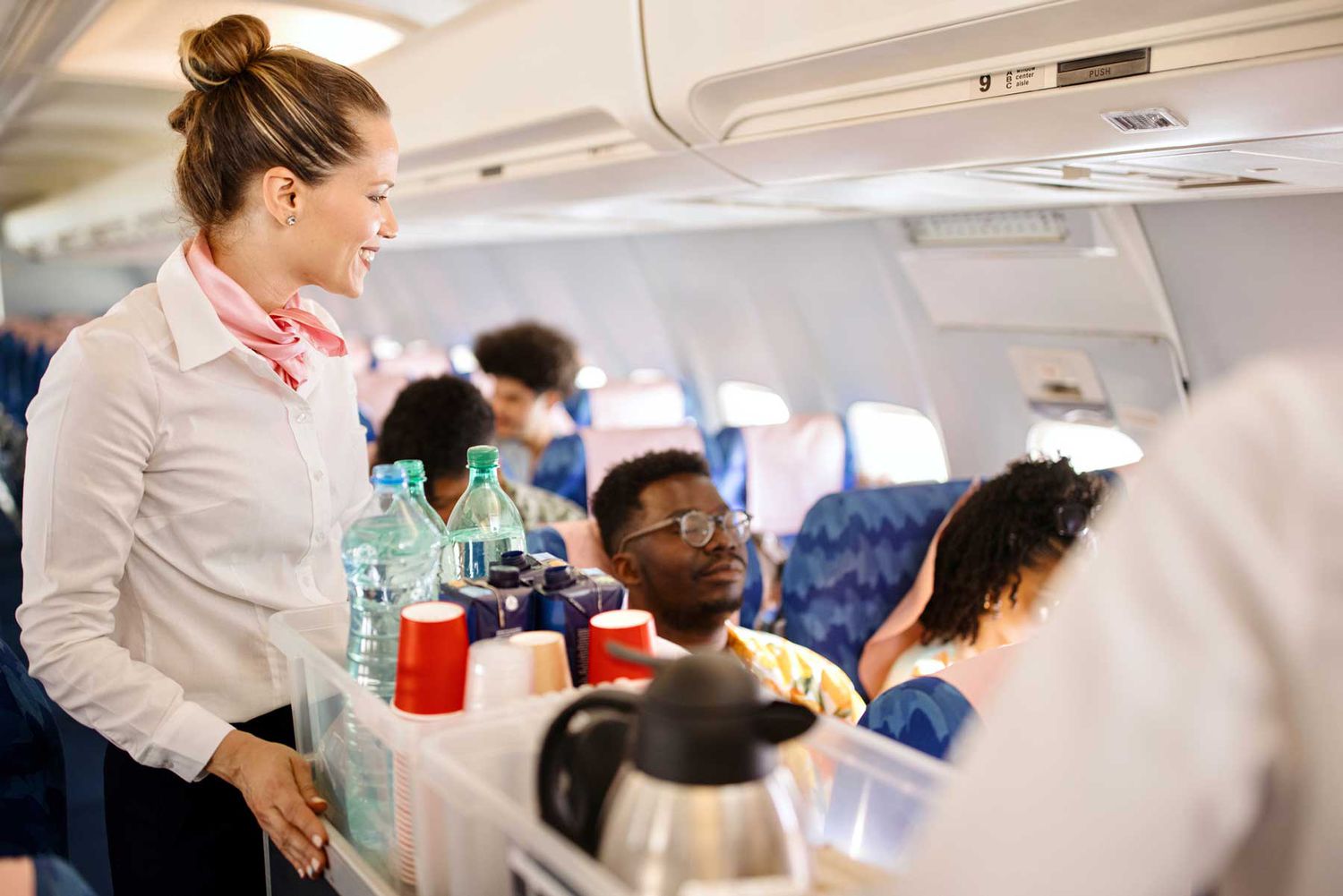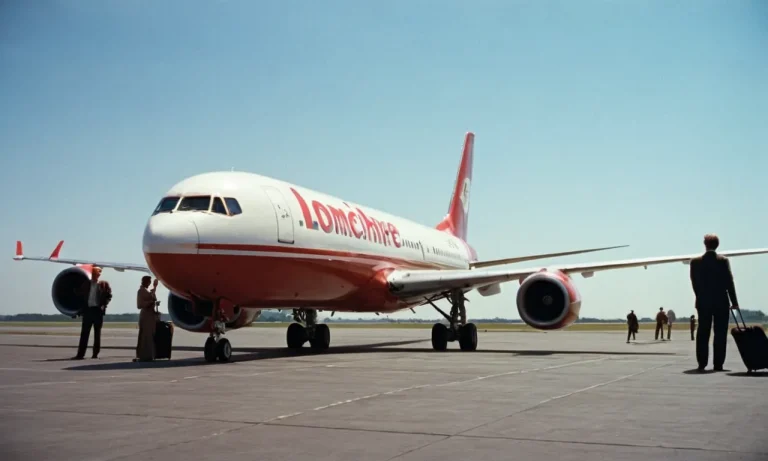Have you ever wondered about that mysterious extra seat at the back of the plane that flight attendants use during takeoff and landing?
The flight attendant jump seat is an essential part of airline operations, allowing cabin crew to be seated for safety while providing onboard service.
If you’re curious to learn more, buckle up as we uncover everything you need to know about this unique airplane seat.
If you’re short on time, here’s a quick answer: The flight attendant jump seat is a foldable seat reserved for airline crew members, usually located near the galley and aircraft doors.
What Is a Flight Attendant Jump Seat?
A flight attendant jump seat is a specially designed seat located in the cabin of an aircraft, specifically for flight attendants.
It serves multiple purposes and plays a crucial role in ensuring the safety and comfort of both the flight attendants and passengers.
Definition and Purpose
The flight attendant jump seat is a foldable seat that flight attendants use during takeoff, landing, and turbulence.
It allows them to securely fasten themselves when the aircraft is in motion, ensuring their safety and ability to perform their duties effectively.
The jump seat is strategically positioned to provide a clear view of the cabin, enabling flight attendants to monitor passengers and respond to any emergencies quickly.
Location
The exact location of the flight attendant jump seat may vary depending on the aircraft model and airline. In most commercial aircraft, the jump seat is usually found near the galley area or at the rear of the cabin.
It is typically positioned facing the passengers, allowing flight attendants to maintain visual contact with the entire cabin.
Design and Features
The design and features of flight attendant jump seats are regulated by aviation authorities to ensure safety and functionality.
These seats are engineered to withstand high impact forces and are equipped with safety harnesses or restraints to secure flight attendants during turbulent conditions.
They are often ergonomically designed to provide comfort during long flights.
Flight attendant jump seats are foldable to optimize space when not in use. They are designed to be easily stowed away, allowing for efficient movement within the cabin during service and emergencies.
Some jump seats may also come with additional features such as storage compartments for essential items like emergency equipment or personal belongings.
Why Do Flight Attendants Sit in a Jump Seat?
Flight attendants play a crucial role in ensuring the safety and comfort of passengers during a flight. One of their responsibilities includes sitting in a jump seat.
The jump seat is a specially designed seat located in the cabin of an aircraft, typically near the emergency exits.
Flight attendants sit in these seats for various reasons, primarily related to safety regulations, takeoff and landing procedures, and turbulence.
Safety Regulations
Flight attendants are trained to handle emergency situations and are required to be seated in a jump seat during critical phases of flight.
This is mandated by aviation authorities to ensure that in case of an emergency, flight attendants are in a secured position and ready to assist passengers.
By being seated, flight attendants are able to quickly respond to any situation that may arise, such as assisting with the evacuation of passengers or providing first aid.
Takeoff and Landing
During takeoff and landing, the aircraft is most vulnerable to accidents and incidents. Flight attendants are required to be seated in their jump seats to maintain balance and stability in the cabin.
By sitting in the jump seat, flight attendants are able to prepare for any potential turbulence or sudden movements that may occur during these critical phases of flight.
This ensures that they are ready to respond promptly to any passenger needs or safety concerns that may arise.
Turbulence
Turbulence is a common occurrence during flights, and flight attendants play a vital role in ensuring the safety and well-being of passengers during these situations.
By sitting in a jump seat, flight attendants are able to securely fasten their seatbelts and be better prepared to handle turbulence.
They are also able to monitor the cabin and passengers, ensuring that everyone remains calm and safe.
Flight attendants are trained to provide reassurance and assistance to passengers during turbulent conditions, and their presence in the jump seat allows them to do so effectively.
This regulation is in place to prioritize the safety of both passengers and crew members.
 Who Can Use the Flight Attendant Jump Seat?
Who Can Use the Flight Attendant Jump Seat?
The flight attendant jump seat is a special seat on an aircraft reserved for cabin crew members during takeoff, landing, and turbulence.
It provides a secure and comfortable place for flight attendants to perform their duties while ensuring their safety.
While the primary purpose of the jump seat is for the cabin crew, there are certain instances where other individuals may be allowed to use it.
Qualified Cabin Crew
The flight attendant jump seat is primarily reserved for qualified cabin crew members. These individuals have undergone extensive training and have the necessary knowledge and skills to handle emergency situations and provide assistance to passengers.
They are responsible for ensuring the safety and comfort of all passengers on board. When not actively performing their duties, cabin crew members may use the jump seat to rest or observe the cabin during the flight.
Deadheading Crew
In some cases, deadheading crew members may be given access to the flight attendant jump seat. Deadheading refers to when crew members are traveling on a flight as passengers to reach their next assignment.
These crew members are not actively working on the flight but are still considered part of the airline’s staff.
Allowing deadheading crew members to use the jump seat helps optimize staffing and ensures that crew members are in the right place for their next assignment.
Off-Duty Crew
Off-duty cabin crew members may also have the opportunity to use the flight attendant jump seat if it is available. This typically occurs when a crew member is traveling on a personal trip but is still recognized as part of the airline staff.
By utilizing the jump seat, off-duty crew members can enjoy the comfort and convenience it provides while also being available to assist in case of an emergency.
It’s important to note that the availability and eligibility to use the flight attendant jump seat may vary between airlines and individual flight operations.
Airlines have specific policies and guidelines in place to regulate the use of the jump seat to ensure the safety and efficiency of their operations.
Controversies and Issues with the Jump Seat
Safety Concerns
The flight attendant jump seat is an essential component of an aircraft’s cabin, providing a secure seating option for flight attendants during takeoff, landing, and turbulence. However, there have been safety concerns associated with the jump seat.
One of the main concerns is the limited space available, which can pose a challenge during emergencies or evacuations.
žIn some cases, flight attendants have reported difficulties in quickly accessing the jump seat due to overcrowded aisles or blocked pathways.
This raises questions about the effectiveness of the jump seat in ensuring the safety and well-being of flight attendants during critical moments.
Passenger Misuse
Another controversy surrounding the flight attendant jump seat is the issue of passenger misuse. The jump seat is strictly reserved for flight attendants and authorized crew members.
However, there have been instances where passengers have attempted to occupy the jump seat, either out of ignorance or a desire for extra space.
This not only violates airline regulations but also poses a safety risk. Occupying the jump seat without proper authorization can hinder the movement of flight attendants and compromise their ability to perform their duties effectively.
It is crucial for passengers to understand and respect the designated seating arrangements on an aircraft.
Conclusion
The flight attendant jump seat plays an integral yet underappreciated role in air travel. This unique seat allows cabin crew to meet safety regulations while providing the best possible in-flight service.
While passengers rarely get more than a glimpse of this coveted seat, it’s essential for smooth and safe airline operations.
The next time you spot a crew member strapping into the jump seat, you’ll have a deeper understanding of its vital purpose.






